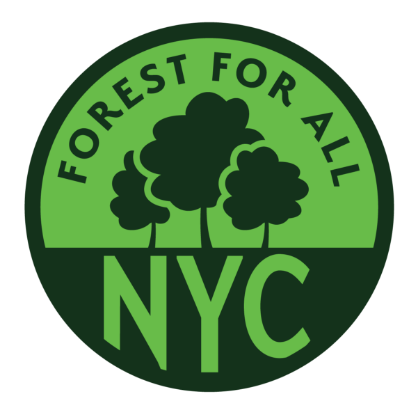Just miles away, Staten Island’s North Shore faces a starkly different reality. Parts of the Island’s northernmost neighborhoods, also its most diverse, have significantly lower “stocking rates,” a measure of the percentage of living trees of an estimated capacity, compared to the South Shore.
These findings, among others, were unearthed in a first-of-its-kind publication released last week by The Nature Conservancy. The report, entitled “The State of the Urban Forest in NYC,” looked at the seven million trees spread across the five boroughs, including those on private land, and observed notable disparities in canopy cover based on factors like race, English proficiency and housing crowding.
“The analysis at a high level was positive in that it showed an increase in tree canopy overall across New York City,” said Sarah-Charlop Powers, executive director of the Natural Areas Conservancy and a contributor to the report. “But it also highlights the real inequity in terms of tree distribution, or canopy distribution, across the city.”
A POLLUTANT REMOVER
The benefits offered by trees are numerous: From cooling streets and reducing pollution to absorbing rainwater and improving mental health. The report estimates the city’s urban forest helps avoid nearly 17,000 health events annually — translating to a savings of more than $77 million per year.
However, these benefits are not equally distributed.
In Brooklyn, Queens and Staten Island, lower tree stocking rates were associated with areas that have higher levels of social and heat vulnerability, the report found. And while new tree canopy growth was strongest in these communities between 2010 and 2017, experts noted that freshly-planted trees in these neighborhoods still need adequate funding, care and time to nurture to adulthood.
With that unequal canopy cover also comes disproportionate pollutant removal, which was estimated to be highest on the South Shore and lowest in areas like the South Bronx — areas that are more significantly affected by underlying health conditions inequitably affected by poor air quality.
Centers for Disease Control and Prevention data shows North Shore neighborhoods have higher asthma and high blood pressure rates compared to the South Shore.
Dr. Michael Treglia, a Staten Islander and a lead scientist of The Nature Conservancy in New York’s Cities Program, said the “compounding effect” of environmental harms like heavy air pollution and the lack of environmental benefits can offer residents “the worst of both worlds.”
“We know that these are communities that tend to face higher heat vulnerability and higher incidences of asthma related to air pollution,” said Treglia. “So, it’s important to increase the equity of this important asset that can provide benefits to all New Yorkers in a better, more holistic way.”
Staten Island’s harmful ozone pollution has been previously highlighted by the Advance/SILive.com as a dangerous precursor to the COVID-19 pandemic that exposed the dangers of underlying respiratory issues. The latest research shows communities of color — which disproportionately bore the brunt of the COVID-19 pandemic — also has the least environmental resources to combat health issues.
THE POWER OF FLOODING MITIGATION
Climate change has and will continue to intensify storms that batter New York City. Trees play an integral role in working together with the city’s gray infrastructure — like sewers and catch basins — to mitigate the effect of flooding.
However, those same storm events, combined with the disastrous effects of rising tides and increased levels of heat, also pose a significant threat to the urban forest, the report notes.
While a major storm like Hurricane Sandy did not result in a significant net-loss of tree canopy cover for Staten Island, Treglia said a future storm could hit the borough in a drastically-different fashion and fundamentally change levels of tree canopy on the Island.
To combat that potential degradation, planners have to be cognizant of the effects of climate change by making choices that include properly selecting trees that can withstand rising temperatures and adverse weather events, experts said.
And, as coastlines change due to global warming, Charlop-Powers, of Natural Areas Conservancy, said the city needs to plan on factors that will fundamentally change the equation of natural resources throughout the five boroughs and potentially alter the collection of trees on Staten Island.
The Nature Conservancy report notes that “coastal areas of NYC also face storm surges, and sea-level rise that will regularly expose trees to increased salinity and ultimately contribute to vegetation transitions in affected areas.”
“I think, long term, we have some real work to do in terms of thinking about increased existence of coastal forests,” said Charlop Powers. “As our coastlines change, we will have and see more forests that are impacted by coastal factors.”
Ajamu Brown, a member of the North Shore Waterfront Conservancy of Staten Island, said The Nature Conservancy report illuminates the need to target and fund programs that combat the loss of the city’s urban forest to improve air quality and mitigate flooding.
“Incentivizing public and private stakeholders to plant and protect urban trees where it’s most needed should be a key priority to protect vulnerable communities from the impact of extreme weather events which is rapidly accelerating now due to climate change,” said Brown.
As Staten Islanders residing in the hottest ZIP codes are also overburdened by higher rates of poverty, air pollution and illnesses spurred by policies that have a disparate impact on communities of color, Brown said areas dubbed “Environmental Justice communities” deserve “a healthy environment to live, work and play.”
Conservation, economic development, health equity and environmental justice are “intertwined” issues, Brown noted. The loss of trees at the site of the Graniteville wetlands amid construction for a BJ’s Wholesale is a “glaring example” of how urban forest can be lost to commercial profit without consideration for increased air pollution and increased heat island effect, said Brown.
